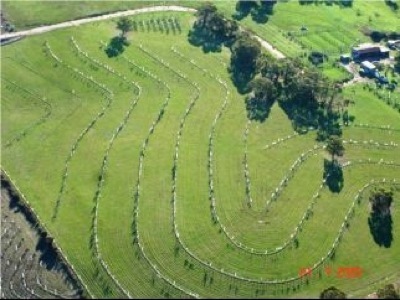The efficacy of the Abbott government’s ‘spearhead’ climate policy, its Direct Action Emissions Reduction Fund, is coming under increasing scrutiny, with a new report suggesting a delayed second round of ERF auctions would result in a $1.4 billion windfall for heavy polluting industry sectors, including mining and energy.
The report, by market analysts RepuTex, suggests that the Clean Energy Regulator is “highly likely” to delay the second Emissions Reduction Fund auction from the originally slated time of July this year, until some time next year, to buy more time for industry to participate in the new emissions scheme.
But the effect of this increased industry participation, it says – while perhaps helping to push down auction prices – could mean “game over” for the carbon farming sector.
The first auction round, completed in the last week of April, was highly criticised for selling emissions abatement at an inflated price some said would deliver only 15 per cent of its own 2020 target.
Then, on Tuesday this week, a CER submission to the Senate Estimates Committee was seized upon by the Opposition as proof that 107 of the 144 projects awarded contracts in the first auction were actually already in existence.
“This means around three quarters of pollution reduction Greg Hunt claimed to have purchased in the first round of the ERF was already happening. At a price of $66 per tonne, Minister Hunt has bought only 10 million additional tonnes of carbon abatement,” shadow climate minister Mark Butler said.
According to the Reputex report, by delaying the second ERF auction, high emitting companies would have more time to register projects to participate in the scheme, and thus would lead to greater competition, pushing prices down, and enabling the Regulator to get more bang for its buck by purchasing emissions reductions more cheaply.
“Supply of abatement from industry will mean greater competition in the market, and downward pressure on the carbon price – which is positive for the government – so we anticipate that the Regulator will seek to support that industry involvement,” said Reputex executive director Hugh Grossman.
But Reputex warns that this increased industry involvement would come at a cost; “squeezing out” the carbon farming sector, while giving industry a forecast $1.43 billion-plus – or 76 per cent of all remaining ERF funding – over all subsequent auctions.
Of this $1.43 billion, says the report, four sectors alone – metals and mining, property, power and energy – are forecast to receive 85 per cent of this windfall.
In comparison, the carbon farming sector – which won over $660 million at the first ERF auction – is forecast to win only $458 million more over the next 12-18 months, or just 24 per cent of remaining funds.
According to RepuTex, this is likely to leave many carbon farming projects on the sidelines, with no funding for their projects, and no buyer for new carbon credits created.
“Carbon farming activities ran the table at the first ERF auction, largely because they were the only companies ready to participate in the market. However, now that industry is ready to go, we will see the pricing dynamics change considerably,” said Grossman.
“With industry participating, we will see many lower cost industrial projects squeeze out and displace more expensive carbon farming projects such as savannah burning and reforestation activities”
“For these types of carbon farming projects, operations will basically cease given that there is no other buyer for their carbon credits outside of the government. So if they do not out-compete industry for funding, it’s pretty much game over,” he said.
Furthermore, warns Reputex, despite downward pressure on the price of abatement, caused by a delayed second auction, would not be enough to stop bids creeping up towards $20/t.
“The Regulator showed a willingness to enter into high priced contracts at the first ERF auction, and set a very high benchmark price to encourage supply” said Grossman.
“Our modelling indicates that many firms contracted at prices much closer to $20 than the $14 average price that was reported after auction one. We anticipate that trend will continue as industry joins the scheme”
For the full story please visit: http://reneweconomy.com.au/2015/second-erf-auction-could-deliver-1-4bn-windfall-to-polluters-40969


